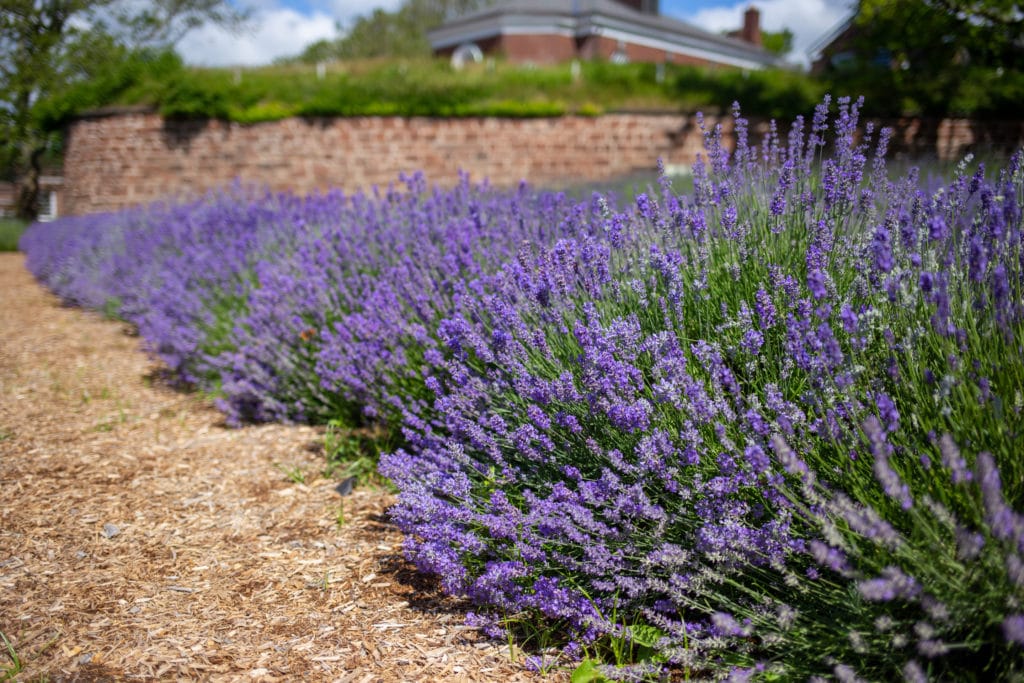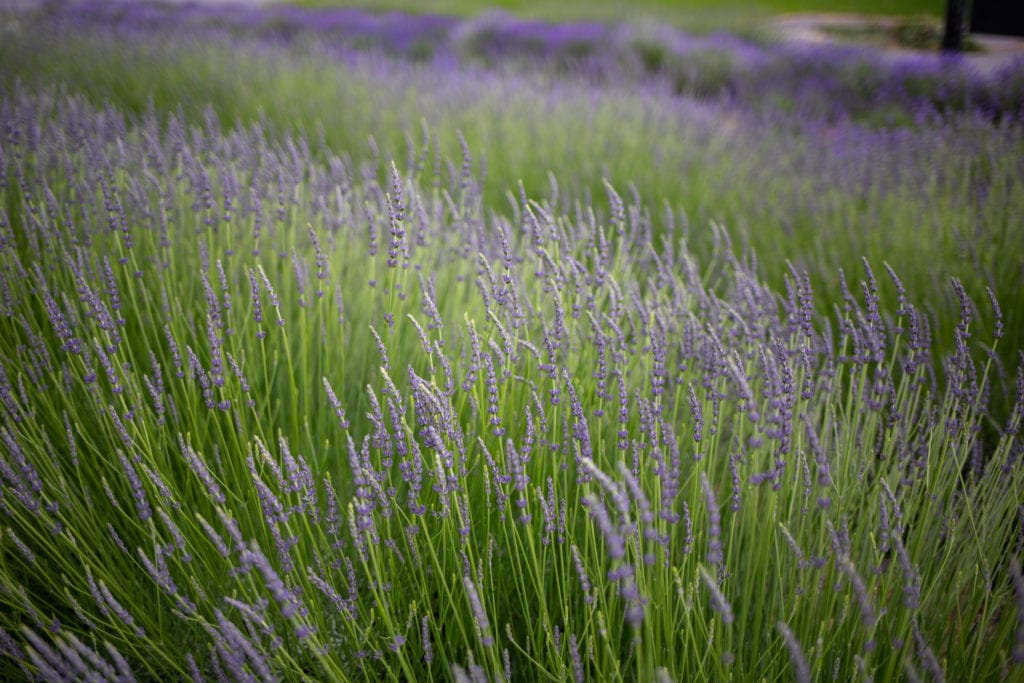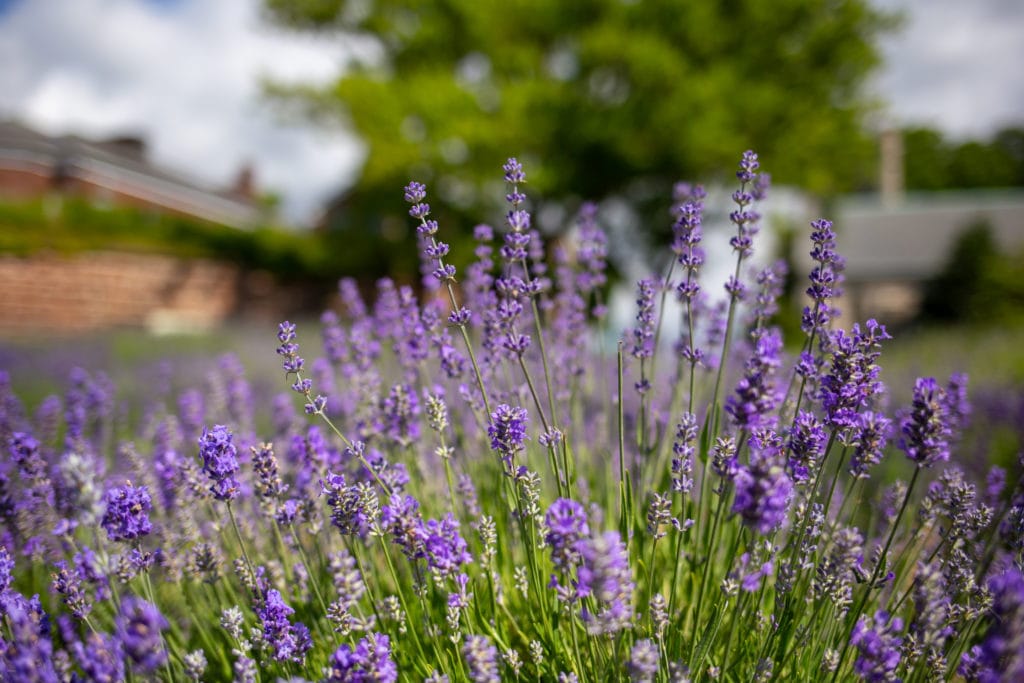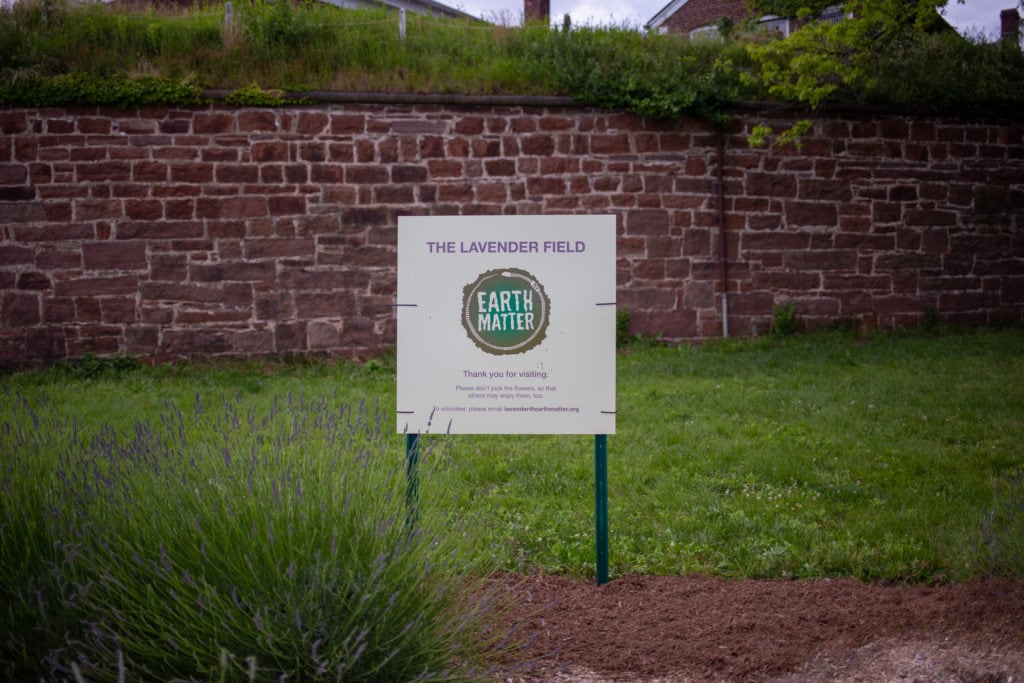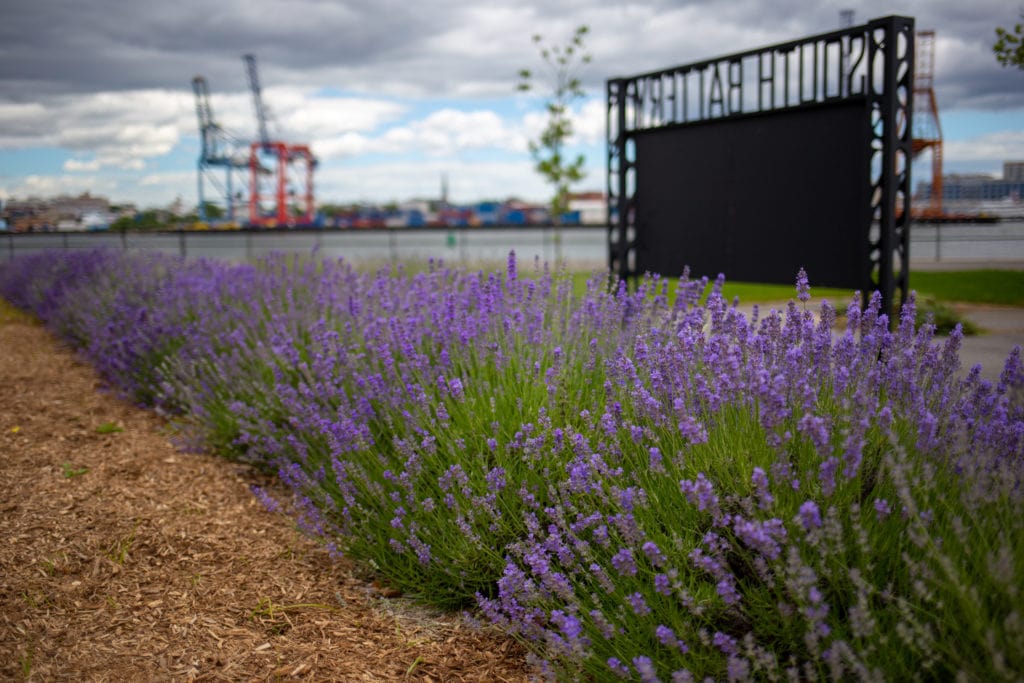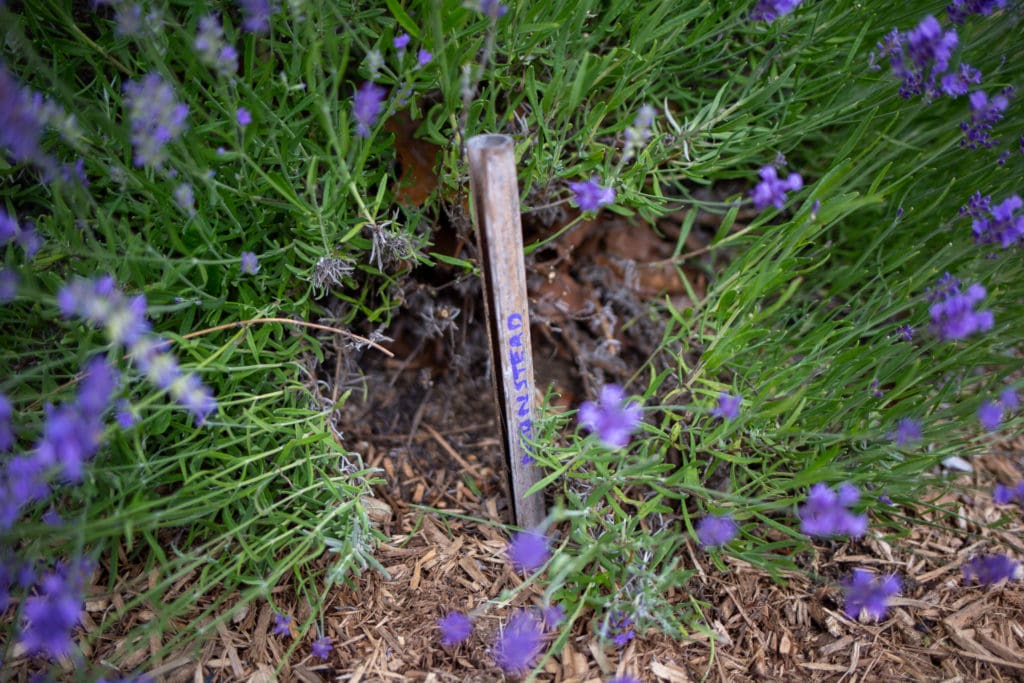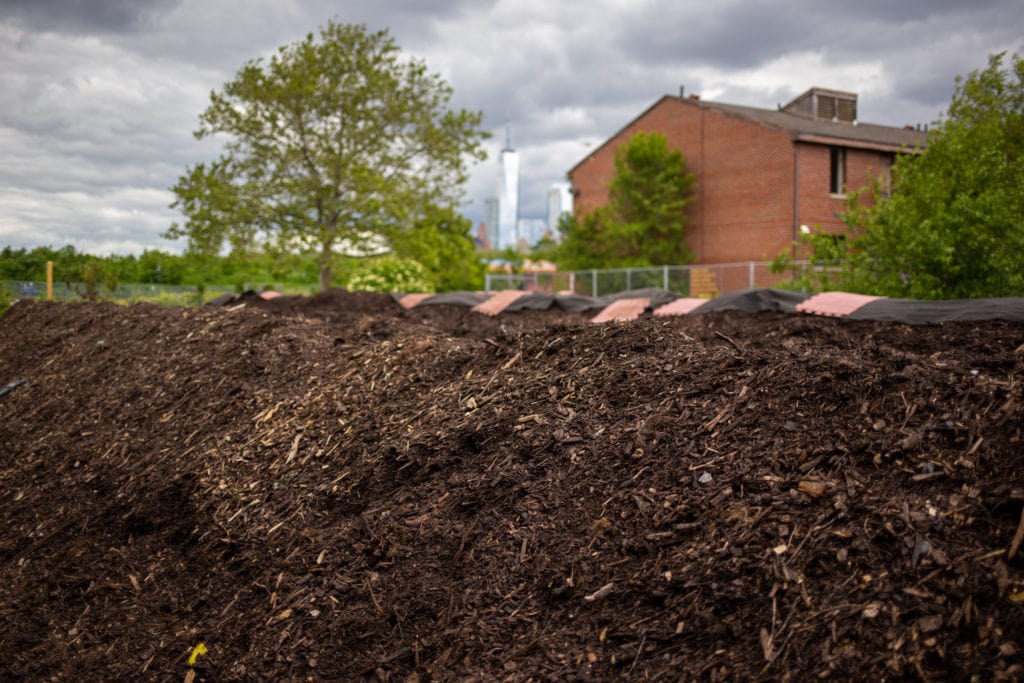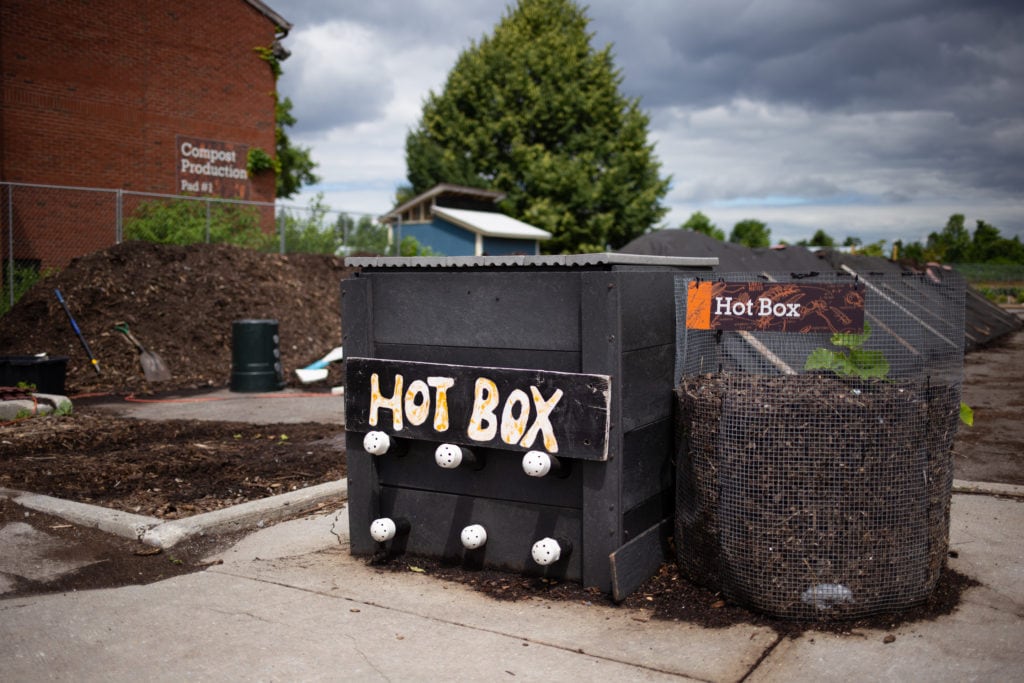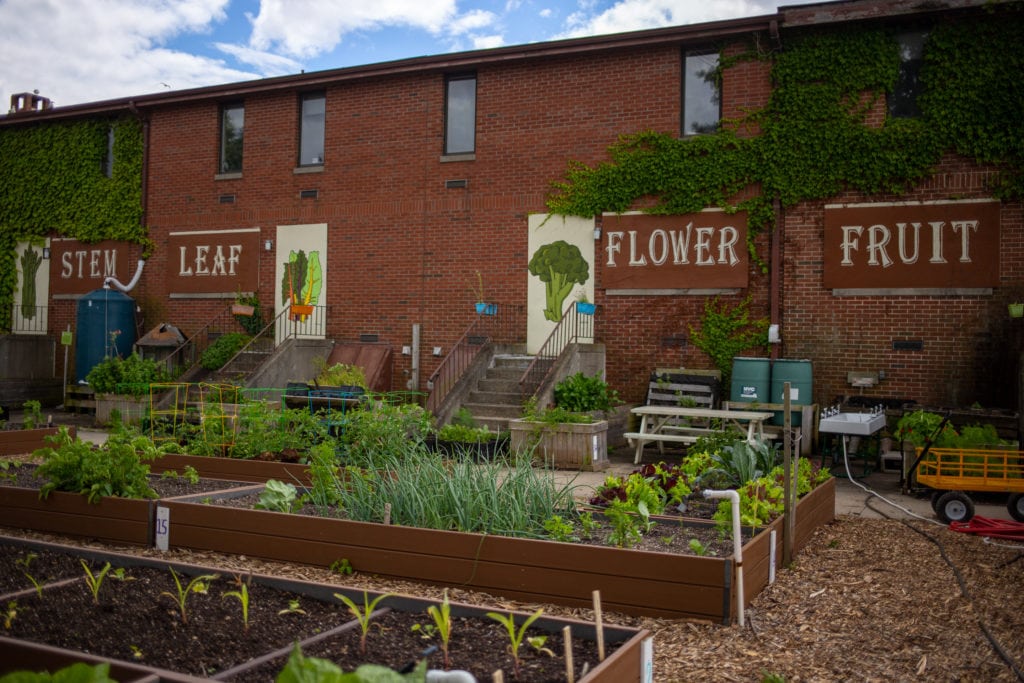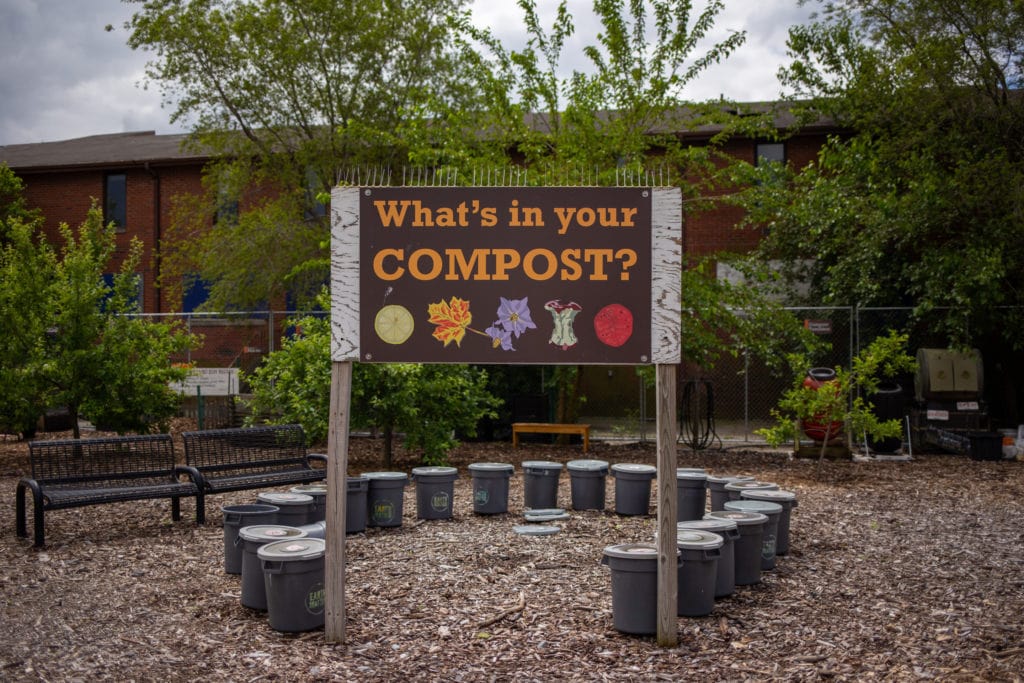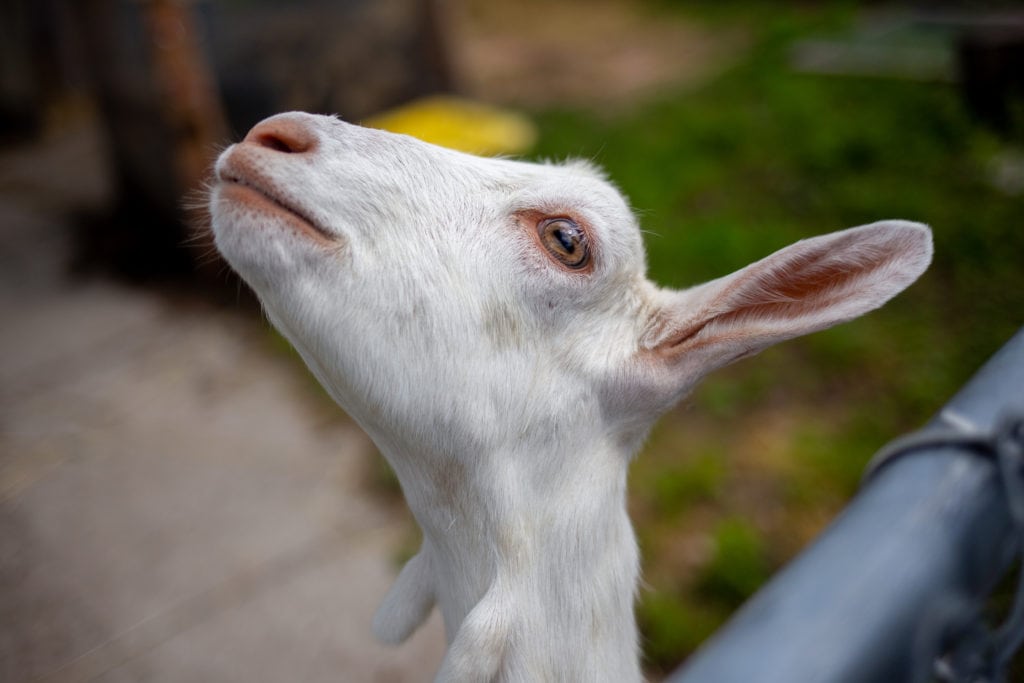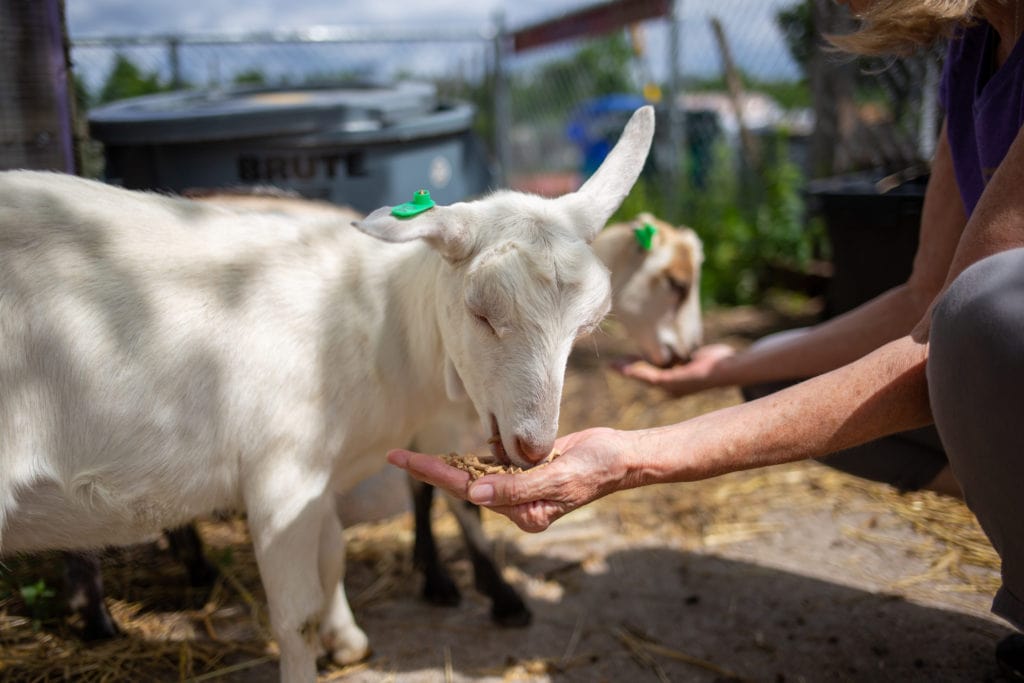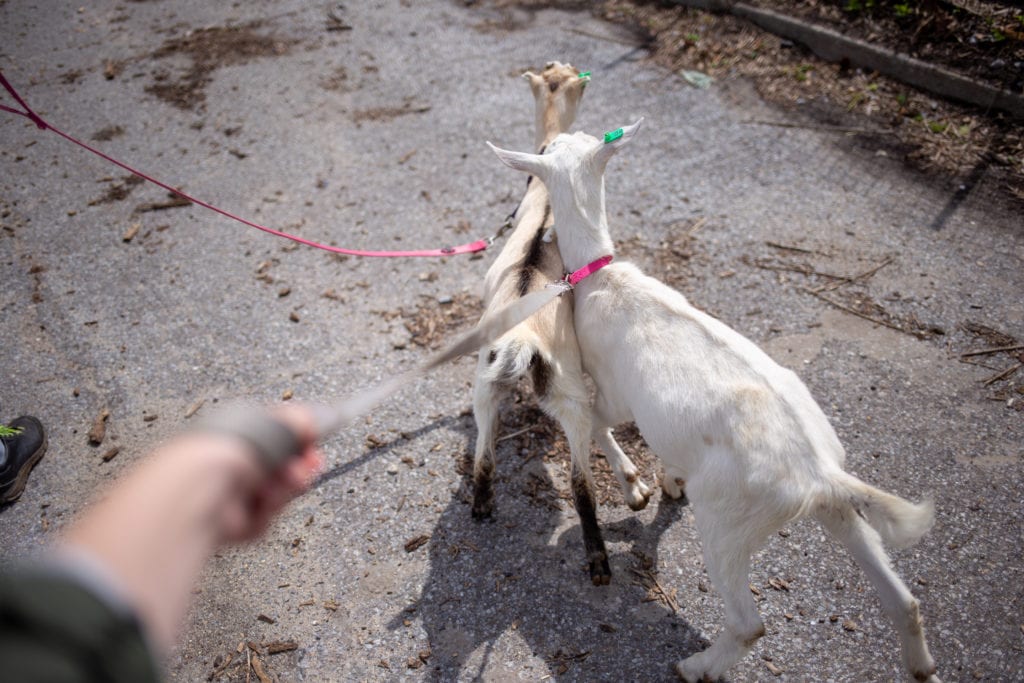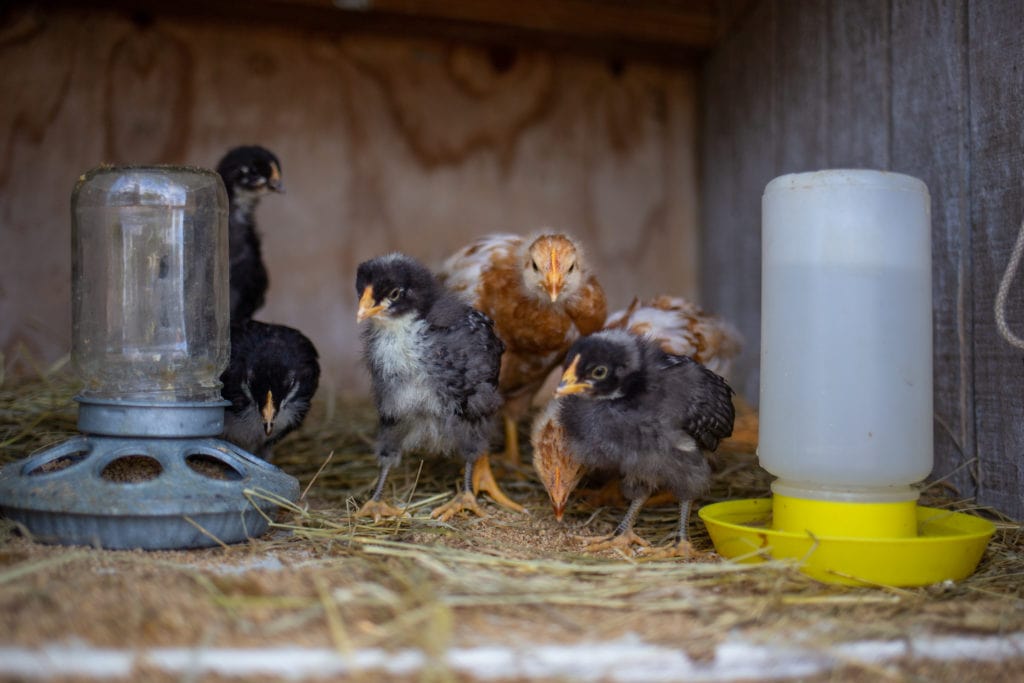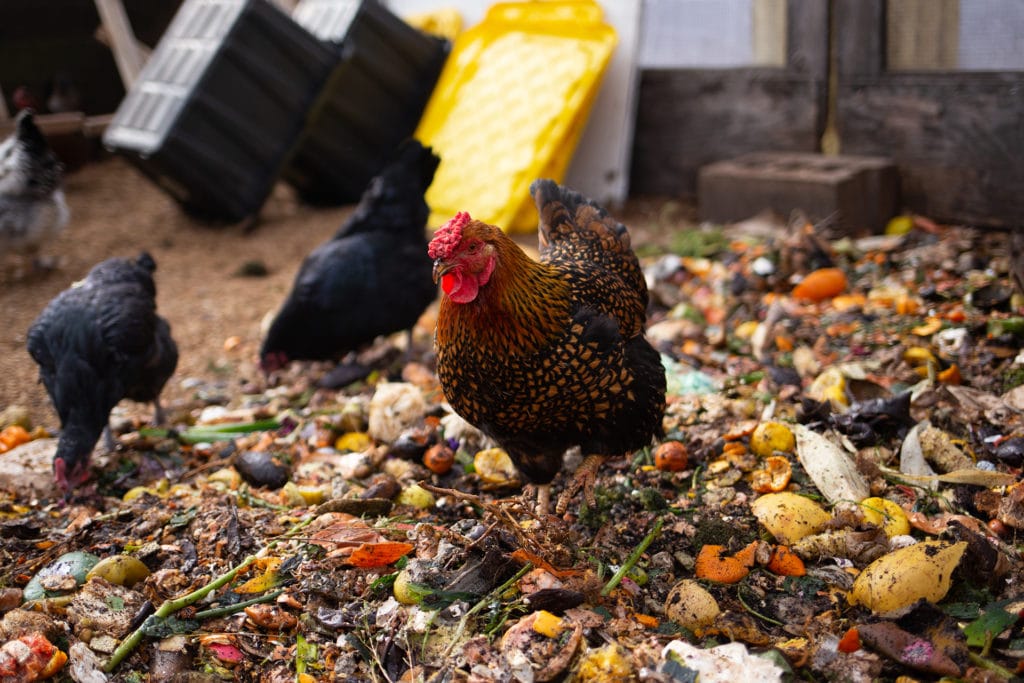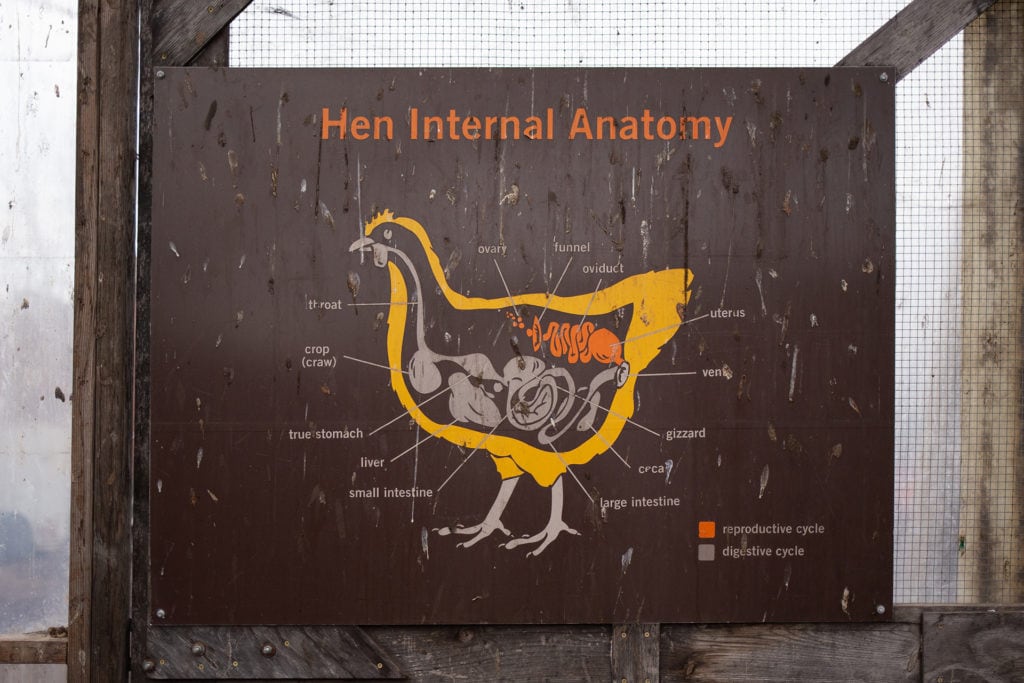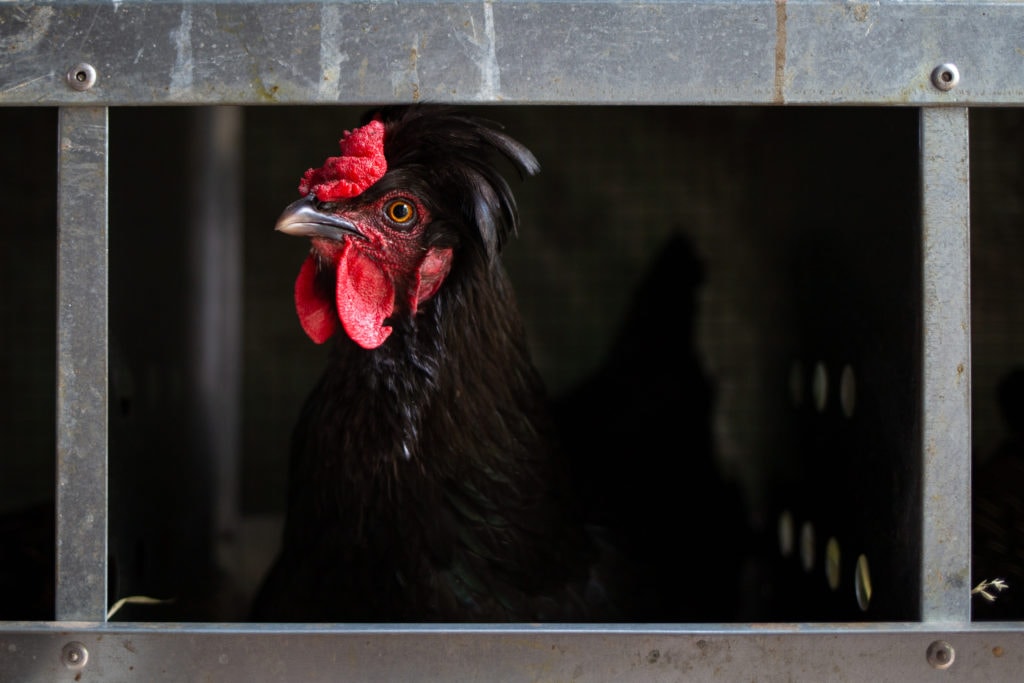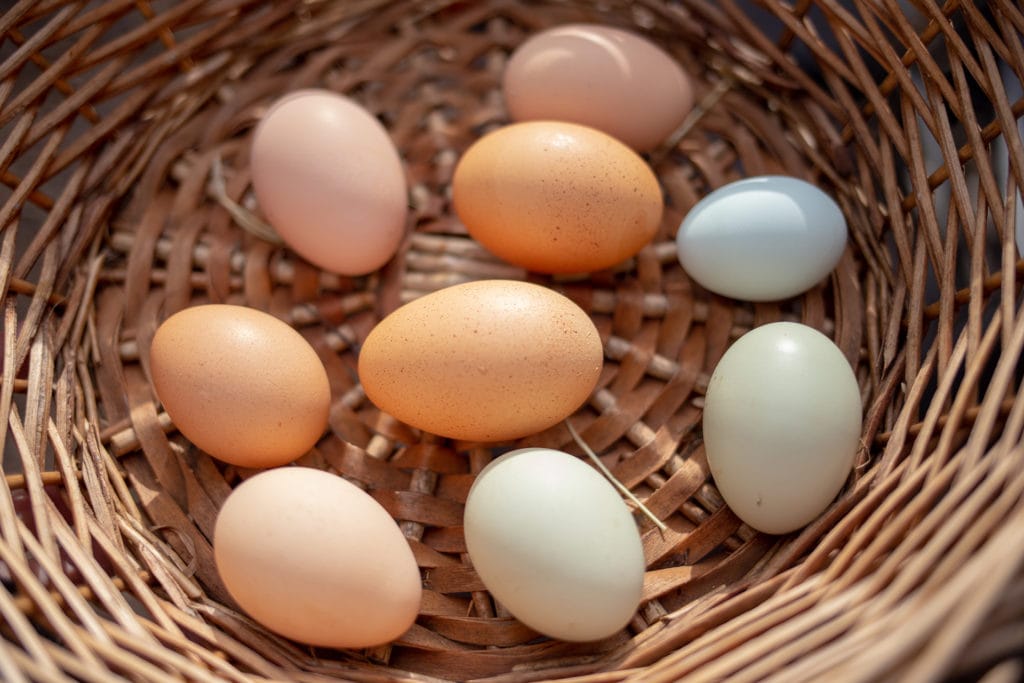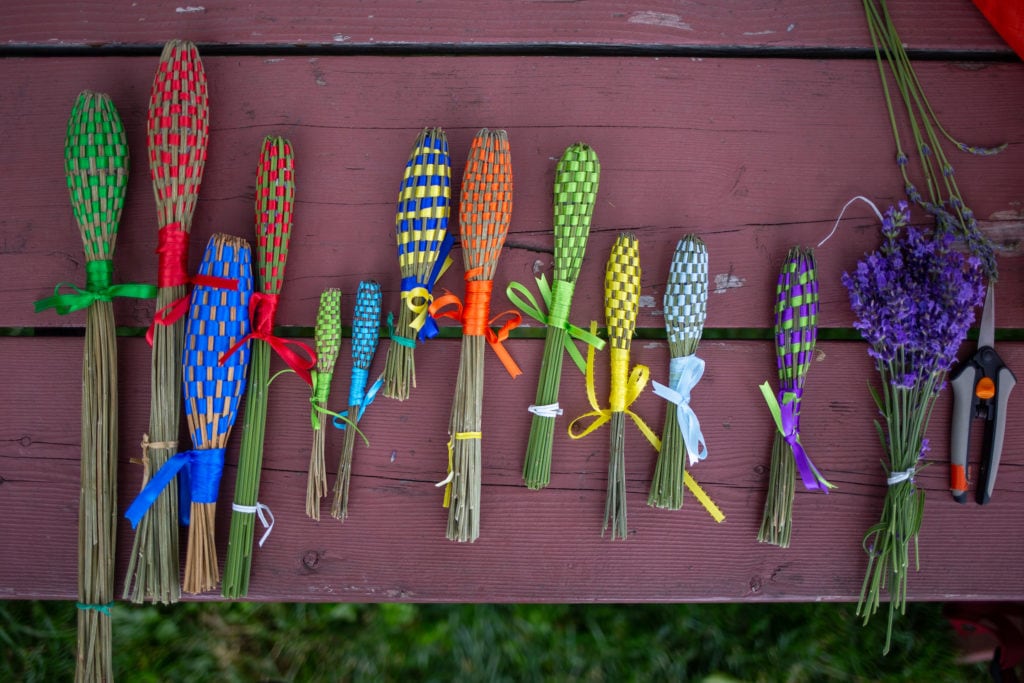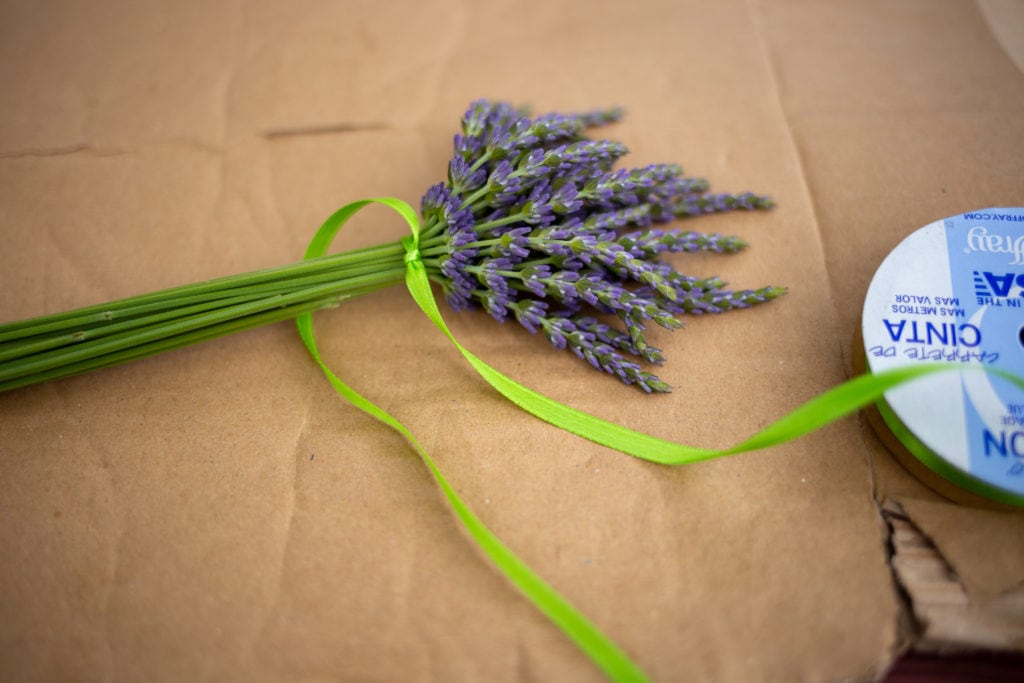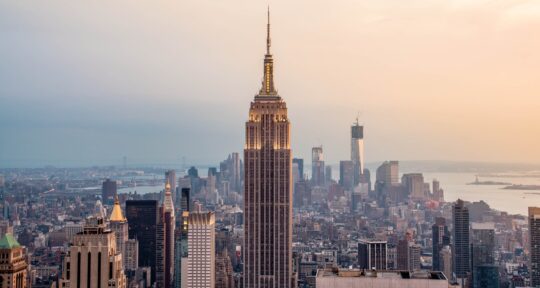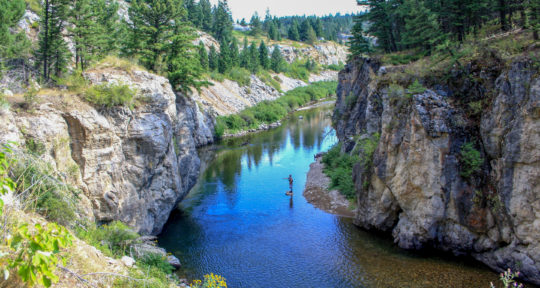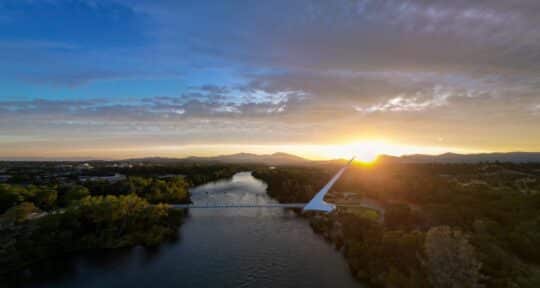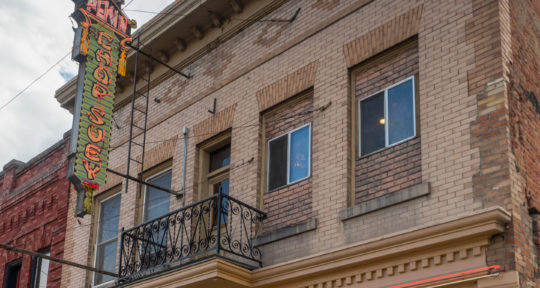On a sunny Friday afternoon, I‘m sitting on a picnic bench on the south side of Governors Island, just a few hundred feet from the Buttermilk Channel, surrounded by a lavender field. I’m concentrating on my task at hand—weaving brightly colored ribbon between stalks of freshly harvested lavender to make a fragrant wand—aka fuseaux de lavande—but I stop periodically to make sure I appreciate the gentle breeze and tune into the bird songs.
The lavender field—the only one of its kind in all five New York City boroughs—was planted in June, 2017. The field comprises 500 plants of four varieties, timed to bloom sequentially every year between June and September. The plants are grown without chemicals or pesticides and, if harvested, the plants will bloom twice in a season. The varieties—Hidcote, Munstead, Phenomenal, and Provence—differ in appearance as well as in fragrance.
-
Photo: Alexandra Charitan -
Photo: Alexandra Charitan -
Photo: Alexandra Charitan -
The lavender field was planted in 2017. | Photo: Alexandra Charitan -
Photo: Alexandra Charitan -
Photo: Alexandra Charitan
The lavender field is just one of the ways in which Earth Matter, an environmental nonprofit organization, is trying to improve the island off the southern tip of Manhattan once occupied by the Coast Guard. Earth Matter also runs a Compost Learning Center and the Soil Start Farm. They host and care for chickens, rabbits, worms, and bees year-round, and goats in the summer.
A seductive island
I first visited with Earth Matter’s chickens on a cold day in January when the island was closed to the public. I boarded a morning ferry—reserved for island workers—with Hollis Hillhouse, who has been volunteering with Earth Matter for ten years. After she retired, Hillhouse was biking around Governors Island when the gardens piqued her interest. She had a garden at home, but the chance to spend more time on the island in an official capacity was appealing.
“It was the island that sucked me in,” Hillhouse says. “The island seduced me.”
When the Coast Guard abandoned Governors Island in 1996, they left behind a huge amount of infrastructure, most of which currently sit empty and in various states of decay. The island has undergone a dramatic transformation in the last few years, and now has undulating, manicured hills, a grove of hammocks, and even a glamping site.
-
The skyline of lower Manhattan is visible from the farm. | Photo: Alexandra Charitan -
Photo: Alexandra Charitan -
An Earth Matter compost pile. | Photo: Alexandra Charitan -
Photo: Alexandra Charitan -
The Soil Start Farm. | Photo: Alexandra Charitan -
Photo: Alexandra Charitan
The (mostly) car-free island is only accessible by taking a ferry from lower Manhattan or Brooklyn, and while the hours have expanded greatly, it is still closed to the public on summer weeknights and in the winter months.
The island is currently home to Castle Williams, a circular defensive structure operated by the National Park Service, an annual Jazz Age Lawn Party, and seasonal art installations. Visitors can rent bikes, slide down the longest slide in the city, or learn to kayak. Amidst all of the sparkling new attractions—on both Governors Island and in New York City as a whole—Earth Matter’s initiatives are a welcome respite.
“How many people can say ‘I harvested lavender’ or ‘I walked some goats today?’” says Hillhouse. “It’s quite healing.”

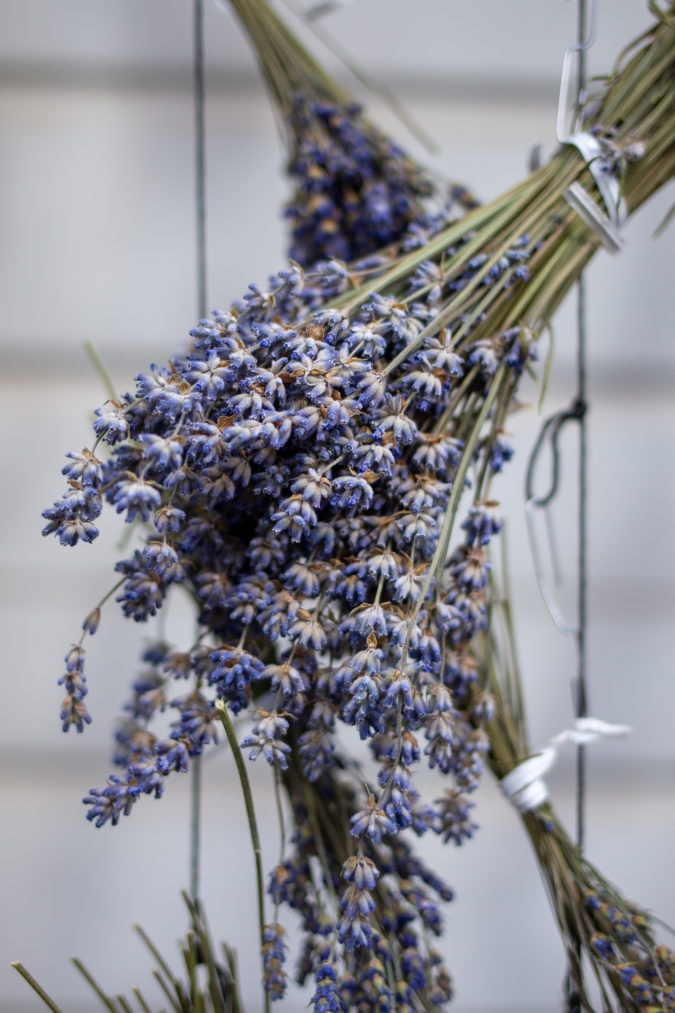
While there is more to do on the island in the summer, I prefered my winter visit for the solitude—a rare and valuable entity when you live in a city like New York. The chickens must be fed daily, year-round, and they continue to lay eggs—albeit less frequently—in the winter. When we passed by the dormant lavender field, it was hard to imagine what it would look like in just a few short months, but Hillhouse graciously invited me back to see for myself in early June. “I feel so lucky to be able to come to this island,” says Hillhouse. “Each season truly has its own beauty.”
Baby goats and baby chicks
Earth Matter was formed in 2009 to promote “the local composting of organic waste into a healthy soil amendment.” Hillhouse explains that the ultimate goal is for Governors Island to become a zero waste island, or “as close to a closed loop as we can achieve.”
The lavender field was planted with compost made from a combination of wood mulch (from the island) and food scraps from the island’s food truck vendors. The chickens also dine on the scraps and produce rich fertilizer in return. The compost is used throughout the island for landscaping, as well as in the green house and planter boxes.
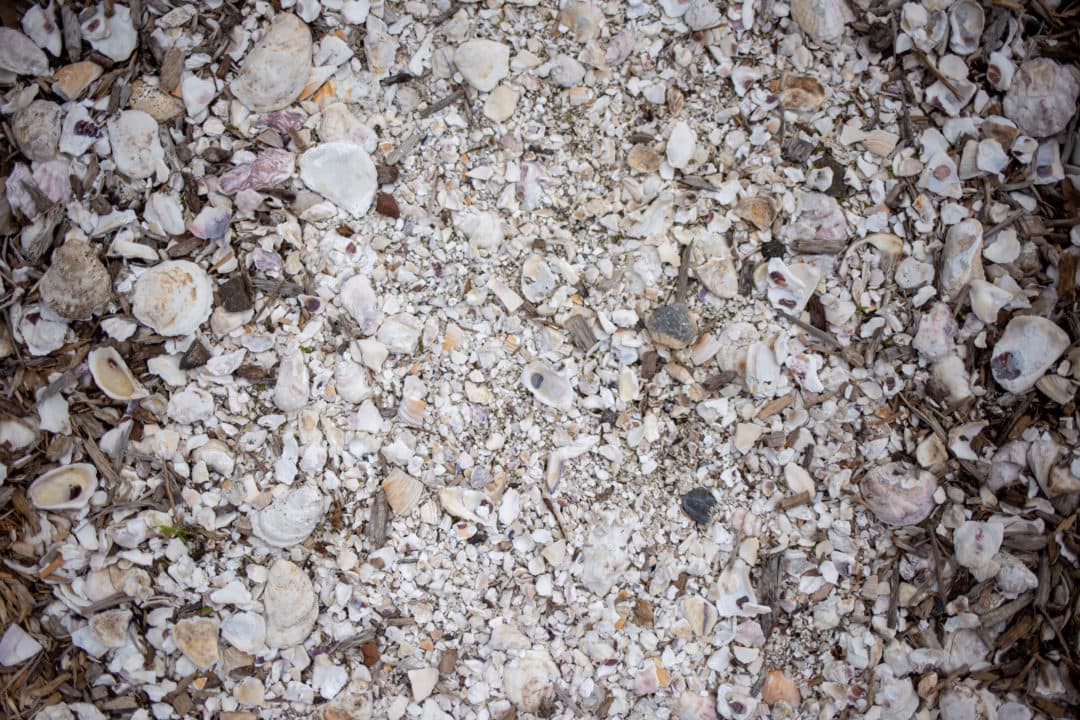
Every summer, Earth Matter hosts two baby goats on loan from a farm in Long Island. The goats browse in the overgrown areas on the island, eat food scraps, and produce nitrogen-rich fertilizer for the compost center. The public suggests names for the (female) goats, and this year’s pair was recently dubbed Poppy and Daisy.
When I return to the island in June, Hillhouse asks if I’d like to take the newly-arrived goats for a walk. I say yes (obviously) and she slips on collars and leashes (not an easy task). Walking a goat turns out to be similar to walking a dog, but with the near-constant munching of leaves punctuated by sudden, spontaneous leaps.
-
Each summer, Earth Matter gets two goats on loan from a local farm. | Photo: Alexandra Charitan -
Poppy is the foreground, Daisy in the background. | Photo: Alexandra Charitan -
Walking goats is similar to walking dogs—with a lot more jumping. | Photo: Alexandra Charitan -
Goats will eat pretty much anything. | Photo: Alexandra Charitan
Chickens are a year-round staple at Earth Matter, and this year six new chicks were purchased to expand the flock. The Governors Island chickens are all hens, which wasn’t always the case. “We re-homed the roosters after the population explosion of 2016,” says Hillhouse. “We suddenly had hundreds of birds.” Now, the population hovers around 70 hens, and new chicks are periodically brought in to repopulate the aging flock.
The chickens are all different breeds—some have elaborate headdresses, some look like they’re wearing feathered pantaloons, and some have iridescent feathers and feet—and they produce a wide variety of eggs. We assess the day’s haul, and I become the lucky recipient of a half a dozen eggs of varying shapes, sizes, and colors.
-
This summer, Earth Matter has six new chicks. | Photo: Alexandra Charitan -
The chickens eat food scraps from local vendors. | Photo: Alexandra Charitan -
A sign in the chicken house. | Photo: Alexandra Charitan -
A chicken laying in the egg house. | Photo: Alexandra Charitan -
The chickens on Governors Island produce eggs of varying shapes, colors, and sizes. | Photo: Alexandra Charitan
Chickens aren’t the only fowl friends who descend on Earth Matter in search of a food scrap feast. Seagulls and other smaller birds have caught on to the routine and can be seen wandering in and out of the chicken house. “You’re kind of on the farm and kind of at the sea,” Hillhouse says. “You’re looking at chickens but hearing seagulls—there’s a funny disconnect there.”
A fragrant oasis
The lavender field was planted “to create a peaceful place, to give back to the pollinators, and to create a beautiful environment where people can come for peace and rest,” says Hillhouse. The plants provide sustenance for the island’s bees, dragonflies, and butterflies, while providing “visitors with a serene, deliciously fragrant oasis where they can set aside the stresses of city life,” according to the Earth Matter website.

The field was not created with financial motives in mind. As a nonprofit, Earth Matter is limited with what they can actually do with the harvested lavender—and with 500 plants producing two blooms a year, they have a lot of lavender. “We’re still trying to figure out what to do with it all,” Hillhouse says. Bouquets and sachets are sold at the Governors Island welcome center, and they recently created 90 sachets for a wedding in exchange for a donation.
Hillhouse shows me three drying racks—repurposed pea vine trellises from the farm—full of recently harvested bouquets. I lean in to smell the graying flowers. “What you’re smelling is death and decay,” Hillhouse explains. “While the lavender is drying, the moisture and the life is leaving the plant.” The smell isn’t quite at roadkill level—it’s more earthy, like damp straw.
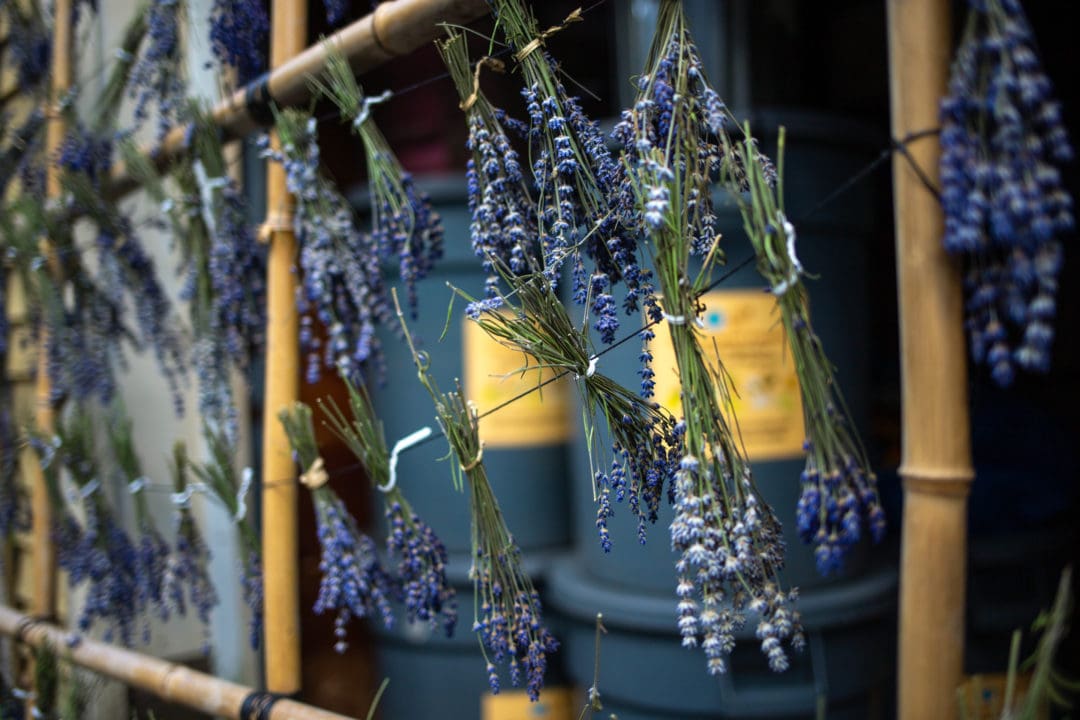
The familiar “lavender” smell actually comes from the essential oil inside of both the flowers and leaves. The pleasant scent emerges only once the plant is fully dry. For those too impatient to wait, it can also be released by smushing the delicate blooms between your fingers. Lavender doesn’t really ever go bad and the plants have a particularly high concentration of essential oil. But those who insist that they get a whiff of fragrance just walking by the field may be imagining it (unless it’s actively being harvested).
Harvesting all that lavender is no easy task, and the small team of field volunteers hosts four pick-your-own bouquet days ($10 suggested donation) in July. “The public went crazy over this initiative,” Hillhouse says. “We had people on a waitlist, people on line. The field is a great photo op.”
A free workshop series, Yoga, Herbs, and Healing, takes place in June and July, and includes sessions on how to make boutonnieres, lavender syrup, sachets, and hand sanitizer. The group also hosts meditation and yoga classes in the open space directly behind the lavender field.
-
Fuseaux de lavande are fragrant wands made from lavender stalks, blooms, and colorful ribbon. | Photo: Alexandra Charitan -
The beginning of a fuseaux de lavande. | Photo: Alexandra Charitan
Hillhouse learned how to make fuseaux on a business trip to the South of France, and she generously offers to teach me the meditative art. Lavender stems are bent around their own flowers, encasing the blooms in a self-contained cage. Colorful ribbon binds the bulb of blooms, ensuring that the wand will remain fragrant for years. “I have fuseaux that are 20 years old and they smell as fresh as the day I made them,” Hillhouse says.
A few hours later, when I’m on the subway on my way back home, I take a whiff of my tiny bouquet of lavender and think about the omelette I’m going to make with the still-warm, pastel-colored eggs stowed in my backpack. I wonder about the goats: Did I walk them correctly? Do they like their names? Are they happy? And then I realize that if their days spent on Governors Island are anything like mine have been, they are going to have a very lovely summer.
If you go
Governors Island is accessible by ferry (from lower Manhattan or Brooklyn) every day of the week during the public season, which is May 1 through October 31. The island is open Mon-Thurs 10 a.m.-6 p.m., Fri-Sat 10 a.m.-10 p.m. and Sunday 10 a.m.-7 p.m. Ferries before noon are free, all other times adults must pay $3 and children under 12 are free. Find out more about Earth Matter volunteer opportunities here.
